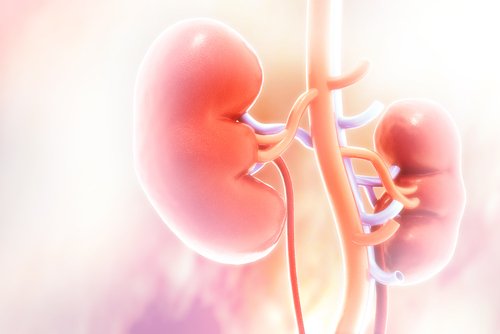Damage Outside Blood-Cleaning Areas of Kidneys Can Predict End-stage Disease, Study Indicates
Written by |

Damage to small tubes in the kidneys and the tissue that surrounds them is a strong predictor that lupus nephritis patients will develop an end-stage renal disease, a New York study indicates.
The research, which appeared in the journal Seminars in Arthritis & Rheumatism, was titled “Tubulointerstitial Damage Predicts End Stage Renal Disease in Lupus Nephritis with Preserved to Moderately Impaired Renal Function: a Retrospective Cohort Study.”
Lupus nephritis is a major complication of lupus. The kidney disease affects up to 60 percent of patients, 10-30 percent of whom may develop end-stage renal disease, a condition with a high death rate. End-stage renal disease means the kidneys have deteriorated to that point that only dialysis or a transplant can keep a patient alive.
Scientists developed a system for classifying kidney tissue damage in lupus nephritis to predict disease outcomes, particularly end-stage renal disease. In some cases it has generated accurate predictions, in others not.
The system focuses on damage in the glomeruli, tiny units where blood is cleaned. But some scientists have believed that tubulointerstitial damage, which affects structures outside the glomeruli, can also signal a poor disease outcome. The term tubulointerstitial refers to small tubes, or tubules, and the interstitial tissue that surrounds them. The damage can include inflammation and moderate to severe lesions.
Until the New York study, scientists did not know for sure whether tubulointerstitial damage was simply a consequence of longstanding lupus nephritis or whether it could predict progression to end-stage renal disease.
Researchers at the Albert Einstein College of Medicine and Montefiore Medical Center in New York decided to see if the damage could predict the development of end-stage kidney disease. Dr. Chaim Putterman led the study, which covered lupus nephritis patients who had yet to develop advanced kidney disease.
The study covered all patients at the center who had been diagnosed with lupus nephritis between January 2005 and July 2015, and whose kidneys were still functioning.
Among the 131 patients in the study, the lupus nephritis of 17, or 13 percent, progressed to end-stage renal disease. Kidney tissue samples indicated that 33 percent of the patients with poor kidney function had moderate to severe tubulointerstitial damage. In contrast, only 13 percent of patients with better kidney function had such damage.
Researchers found that moderate to severe tubulointerstitial damage increased the risk that a patient’s lupus nephritis would progress to end-stage renal disease. Other the other hand, they found no association between tubulointerstitial inflammation and progression to end-stage renal disease.
This finding contradicted previous findings. The reason, the team hypothesized, was that although their study covered patients with functioning kidneys, they did not include those with severe renal impairment.
Only 29 percent of patients with moderate to severe tubulointerstitial damage displayed signs of moderate to severe tubulointerstitial inflammation, researchers said. This suggested that “inflammation may occur very early in the disease course and lead to the development of fibrosis and atrophy over time. On the other hand, our findings suggest that treating early TII [tubulointerstitial inflammation] may prevent the development” of end-stage renal disease.
The study also indicated that glomerular damage and tubulointerstitial damage can occur independently and by different mechanisms in lupus nephritis patients who have yet to develop advanced kidney disease.
Overall, the study showed that moderate to severe tubulointerstitial damage, but not tubulointerstitial inflammation, can be a strong predictor of end-stage renal disease. Doctors should seize on signs of tubulointerstitial damage to begin early treatment aimed at preventing the progression of the disease, the team said.
The researchers said studies in larger groups of patients could lead to ways to prevent the progression of the disease and to develop treatments for it.




